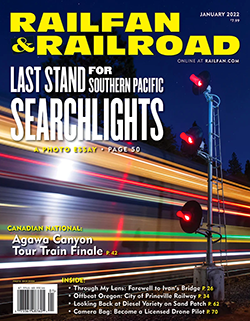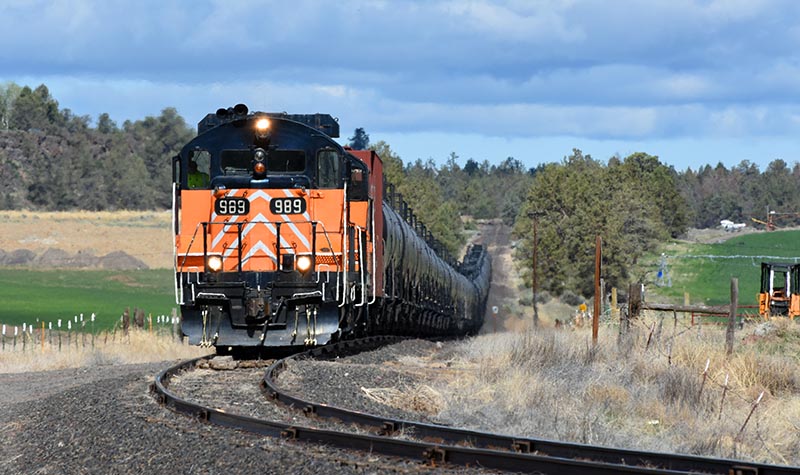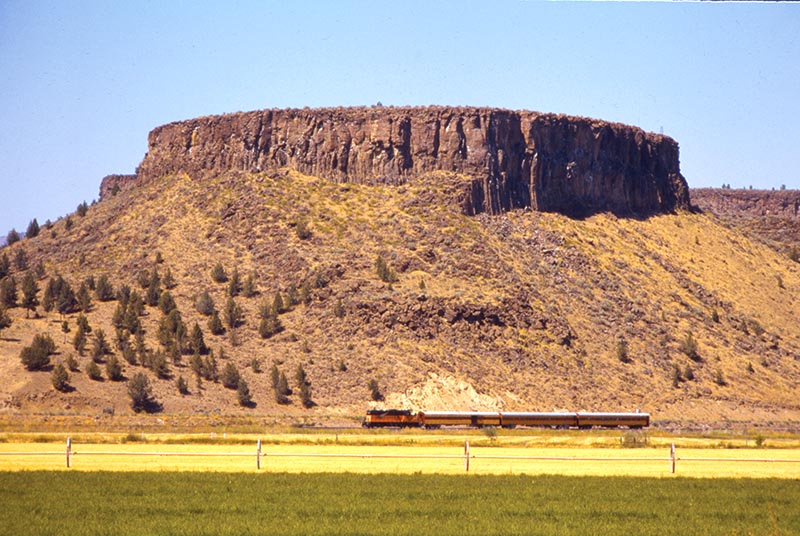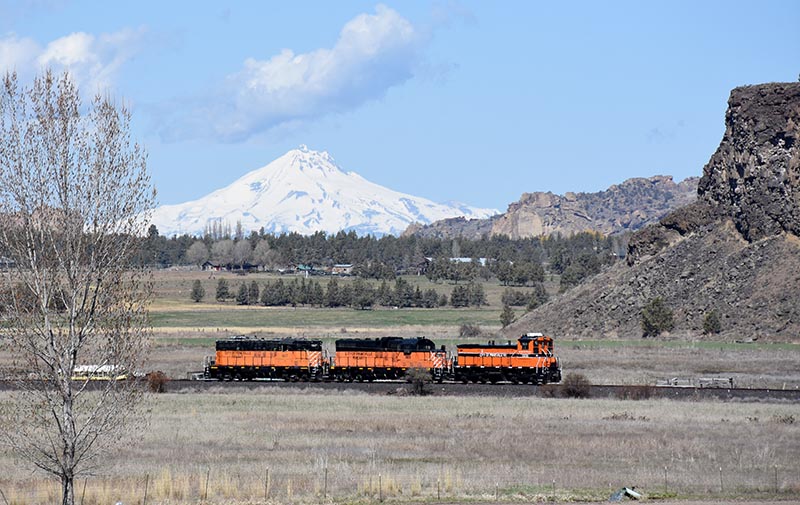 By Austin Jacox/photos as noted
By Austin Jacox/photos as noted
Rolling through the fertile farmlands of the Crooked River Valley, surrounded by towering rimrock cliffs, a short freight train returns to the city of Prineville as it has for more than a hundred years. Oregon’s oldest continuously operating short line, and the country’s oldest city-owned railroad, City of Prineville Railway has seen its ups and downs as the industry and economy have changed, but the railroad continues to meet local needs in a modern world.
Located in Oregon’s high desert region east of the Cascade mountains, Prineville sits at an elevation of 2,900 feet. While Oregon is normally associated with lots of rain, Prineville gets on average only 12 inches of rain a year and eight inches of snow. By contrast, Portland, 125 miles to the northwest, gets 43 inches of rain and three inches of snow. The resulting landscape varies from sparse sagebrush desert to dramatic volcanic rock formations, creating an interesting scenic backdrop for this local short line operation.

ABOVE: Returning from Prineville Junction with a string of tank cars for storage, the 989 works its way eastbound through a dip east of O’Neil on May 4, 2021. —Austin Jacox photo
Timber Boom Times
Despite being Central Oregon’s first settlement, Prineville was bypassed by Oregon Trunk (backed by James J. Hill and Great Northern) and Deschutes Railroad (backed by E.H. Harriman and Union Pacific) as the rail lines built south from the Columbia River toward Bend in the early 1900s. Once the joint Oregon Trunk opened in 1910, Prineville saw business move away to Bend and other communities served by the railroad. Action was needed if the city was to survive.
Local businessmen founded Prineville & Eastern in 1911, and Metolius, Prineville & Eastern in 1912. While MP&E was able to raise some money and secure land for a right-of-way, both attempts failed by 1914. The city took matters into its own hands and chartered its own railroad in March 1916. The city engineer enlisted the assistance of Spokane, Portland & Seattle and UP engineers to plot the course of the railroad. Construction began in 1917, with grading completed by the end of the year.
The city’s own workers laid the rails, completing the job in August 1918, and the 18-mile railroad opened for business. Initially, the city had planned to sell the railroad to a private owner once it was completed, but no buyers could be found, and thus the railroad was operated as a department of the city. During its early years, traffic on the line was limited to connecting with SP&S and UP passenger trains at Prineville Junction, less-than-carload freight for Prineville, and seasonal livestock traffic.

ABOVE: The Crooked River Dinner Train passes a rock formation near O’Neil on August 13, 2006. —Otto M. Vondrak photo
The Ochoco Mountains east of Prineville contained vast stands of Ponderosa pine owned by the U.S. Forest Service. When the pines were finally released to timber operations, the first small sawmills opened in Prineville as early as 1925. By 1938, the mills were expanded and freight traffic began to boom. After years of decline, passenger service was discontinued in 1939, yet the railroad finally declared its first profits.
Freight increased greatly during World War II, but track and roadbed began to deteriorate from the heavy traffic, resulting in regular derailments. After the war, finances allowed the railroad to be completely rebuilt and upgraded. The first diesel locomotive arrived in 1950 to replace steam. From the 1950s on, the railroad was continuously busy, making enough profit that no property taxes were collected from residents through the 1960s and 1970s. By 1978, the railroad was serving nine lumber mill operations.
During the 1980s, the railroad was handling about 2,500 cars a year, which led to another rebuilding of the railroad with heavier rail and new ballast. Ochoco Lumber Co., Crown Pacific, and Woodgrain Millworks were responsible for the majority of the traffic on the railroad at the time.
In 2001, the last two sawmills in Prineville closed, which led to a hard year for the railroad and the city of Prineville in general. In August, Ochoco Lumber closed, followed by the Crown Pacific mill two months later. Together, the two sawmills generated about 2,400 of the railroad’s 2,500 loads a year. The only remaining customer of any importance was Woodgrain Millworks, receiving inbound loads of lumber.
Traffic fell to an astounding low of 87 cars in 2004. The city contemplated abandoning and scrapping the railroad, and its future was in doubt…



